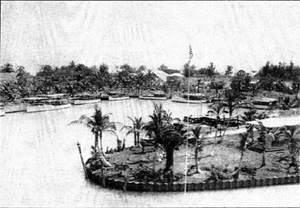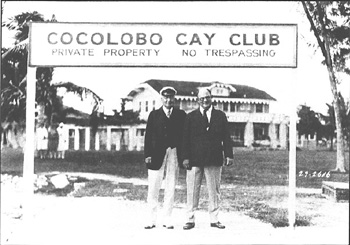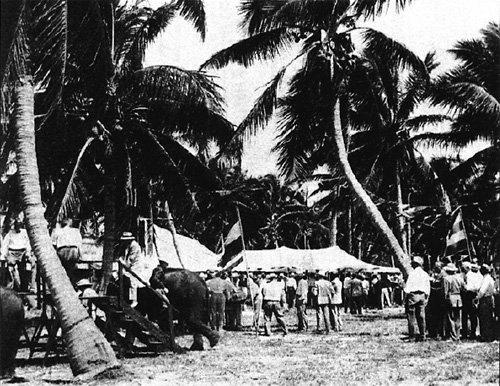
Biscayne park history: Ahead of its time
HOMESTEAD, Fla.—The blast of a cannon fired by Mark C. Honeywell, the owner of Boca Chita Key in 1938, welcomed three yachts full of America’s wealthiest business and political players to his palm-clad limestone wonderland.
 |
| Mark C. Honeywell in 1938 (Photo courtesy of the National Park Service). |
The anticipated annual event, a fete for the Miami Beach Committee of One Hundred, welcomed an exclusive guest list that read like a who’s who of the time—Firestone, Kettering, Seiberling—names still resonating in the automotive industry, which brought Biscayne developer Carl Fisher success.
An extravagantly decorated elephant named Rosie served as one of the main attractions of the event, epitomizing the lavish lifestyles of the benefactors of the American dream—those who claimed what is now Biscayne National Park as their plush playground.
Though the world has significantly changed since 1938, many things have stayed the same at Biscayne.
“It’s still a playground for the wealthy folks,” said Biscayne National Park Ranger Greg Bremen. “Go out to Boca Chita Key this afternoon, and the boats out there all cost more than the house I have.”
What has changed about Biscayne is the exclusivity of access to the park’s resources. In the 1920s and 1930s, nobody except for the very wealthy could afford boats to take them to the surrounding keys. Today, boats are extremely popular and accessible to a larger portion of the population.
“It’s still predominantly a recreational place,” Bremen said. “We have access we provide for folks who don’t have boats, such as glass bottom boat trips and island excursions.”
Access has played another role in the history of Biscayne National Park, one that remains an issue today—smuggling.
With the enactment of prohibition in 1920, the demand for alcohol by wealthy vacationers fueled a bootlegging market across the Biscayne Keys. With the Bahamas a few hours away by motorboat, rumrunners could smuggle alcohol into the United States across the straits and into the area that would become a national park.
 |
| Boca Chita Key in 1938 (Photo courtesy of the National Park Service). |
In the 1930s, the Biscayne keys were also used to smuggle aliens, particularly Asians, into the United States.
“It’s interesting, because the cargo over the years has changed, but smuggling still goes on here today,” Bremen said. “In the 1980s, it was cocaine and other drugs coming in from South America. Now, we’re back into alien smuggling.”
Though smuggling and recreation have served as a sign of the times for the park, one piece of its history placed a Biscayne legend ahead of his time in one of Miami’s first success stories.
Israel Lafayette Jones, an African-American pineapple farmer, purchased a piece of land on Porgy Key for $250 in 1898. Farming pineapples brought his family success until a storm salted the soil, forcing him to switch his livelihood to key limes. The key lime brought him such great success that he and his family were able to buy the entire key and land on several of the surrounding keys.
“There’s an early African-American family owning a lot of property,” Bremen said.
 |
Carl Fisher, right,with a guest at the Cocolobo Cay Club (Photo courtesy of the National Park Service). |
His son, Lancelot Jones became known as the resident “sage” for his expertise as a fishing guide. Presidents and heads of industry of the time boarded Jones’ fishing boats while retreating to Carl Fisher’s Cocolobo Cay Club on Adams Key to take a break from real estate negotiations on Miami Beach.
In the land boom of the 1920s, the Jones family sold its land for one quarter of a million dollars for a 1,000 percent profit.
 |
Elephant rides on Boca Chita Key in 1938 (Photo courtesy of the National Park Service). |
Though the history of Biscayne has spanned dozens of hurricanes, presidents and social patterns, one element of the park has never changed—the people who bring life to the park, use its resources and shape its history.

Comments are Closed